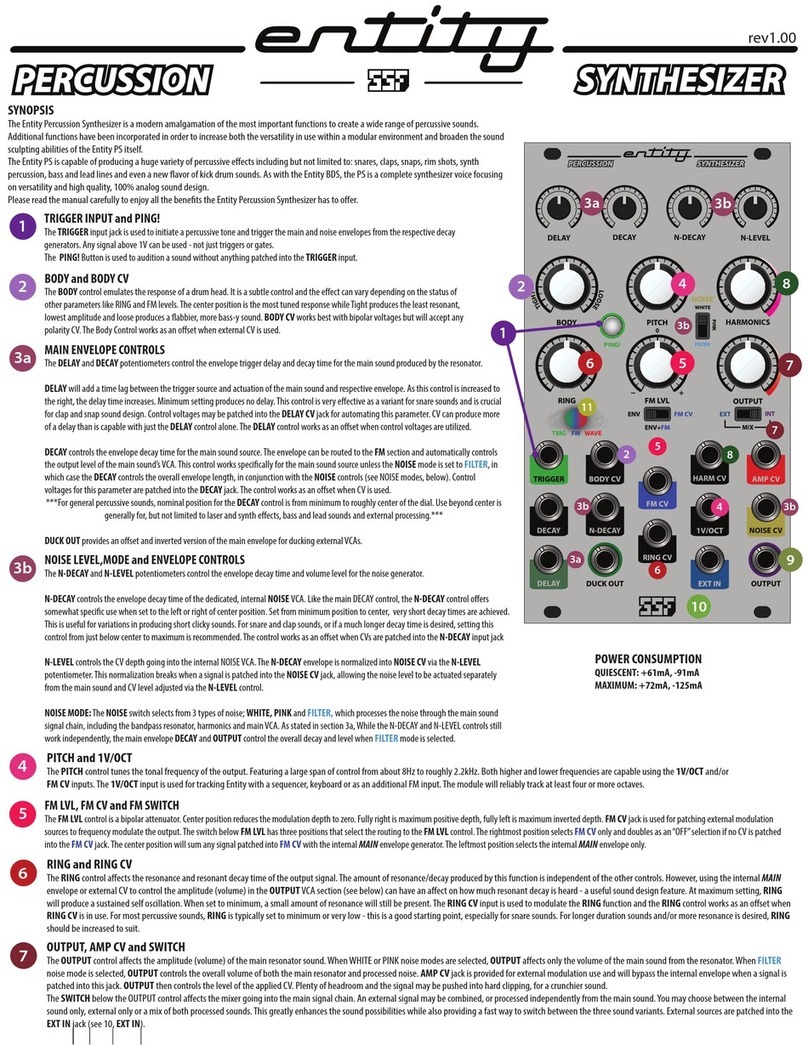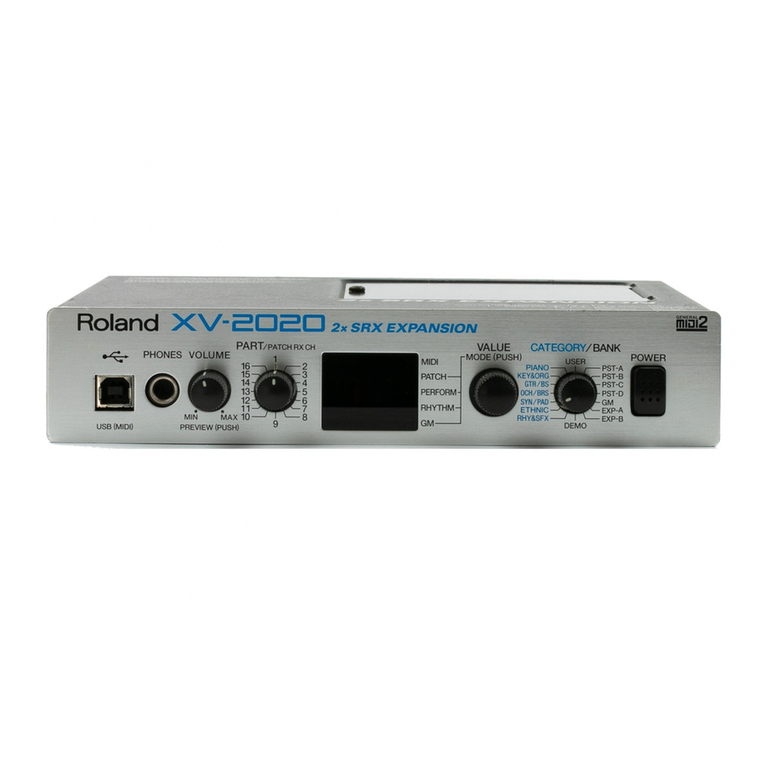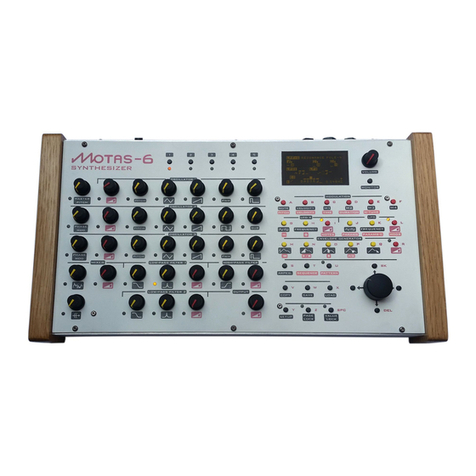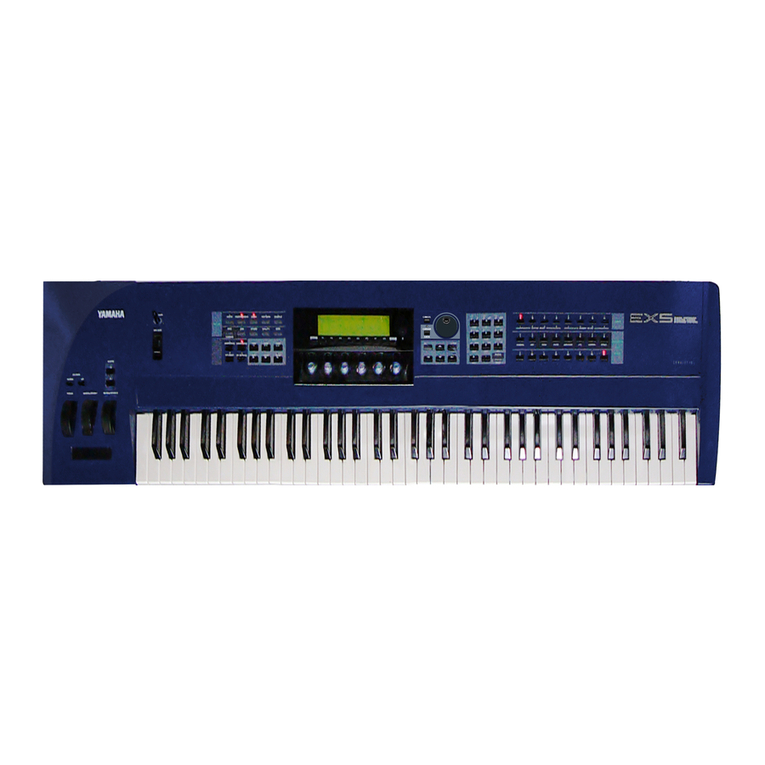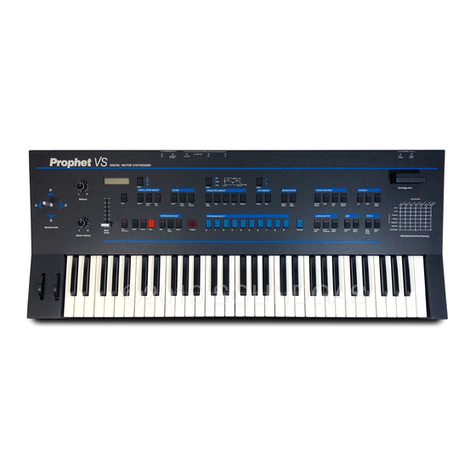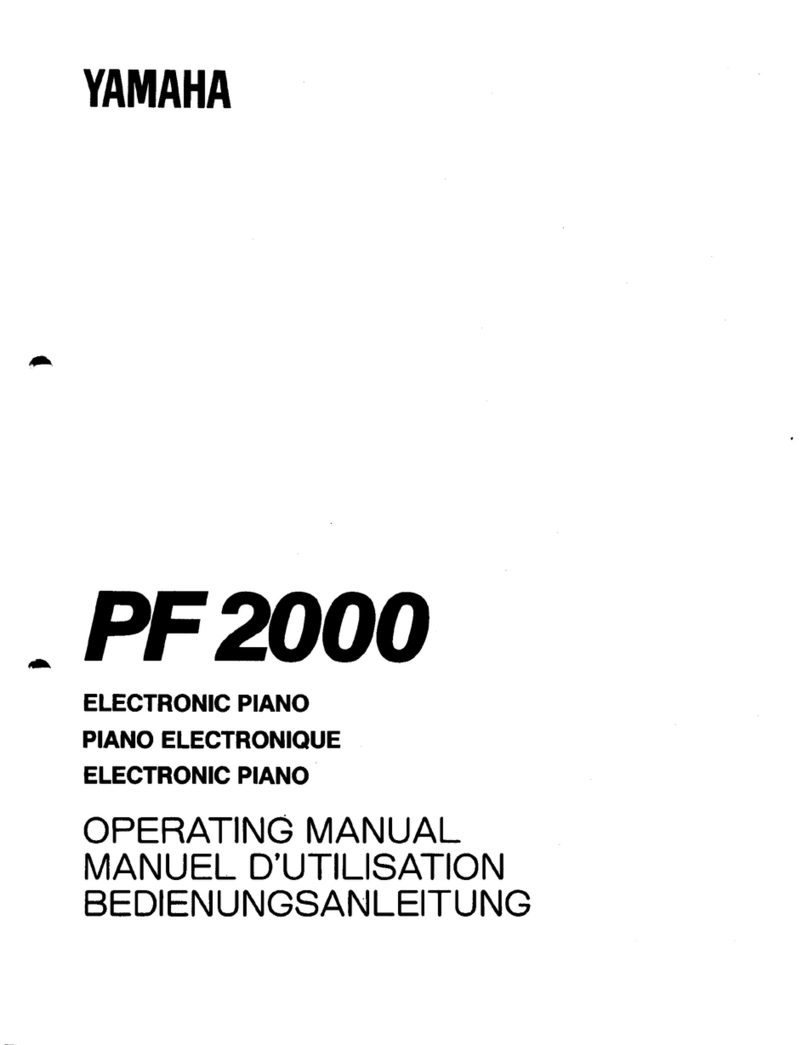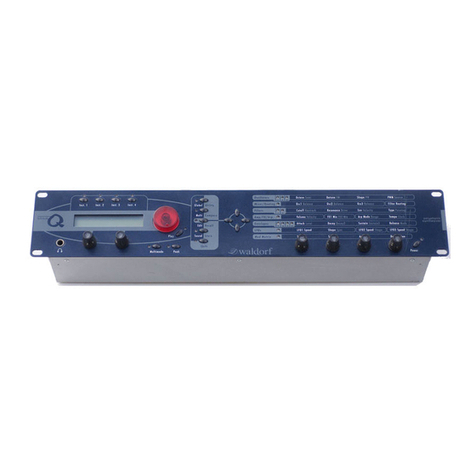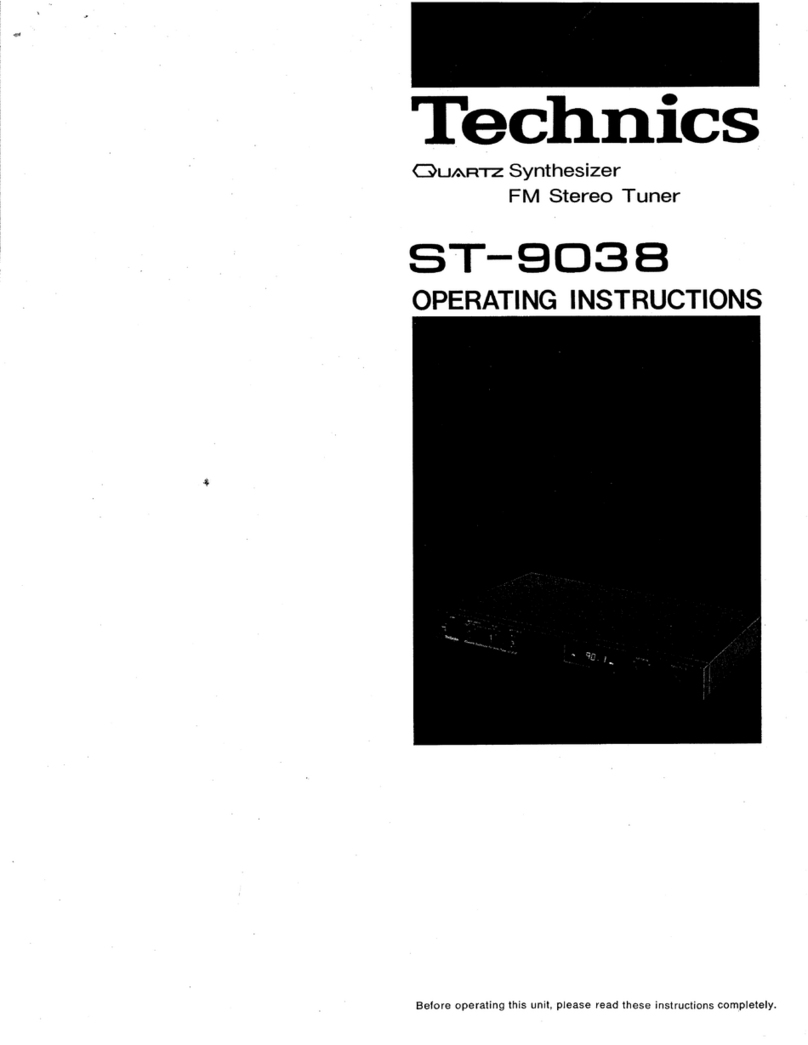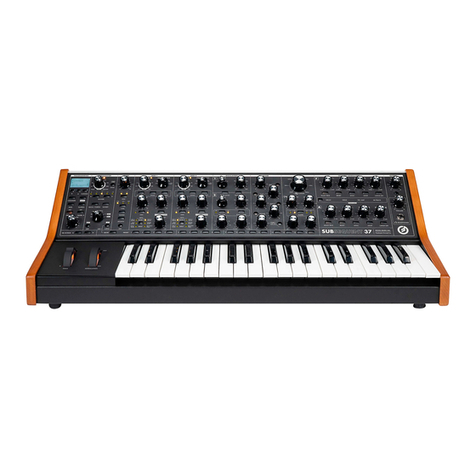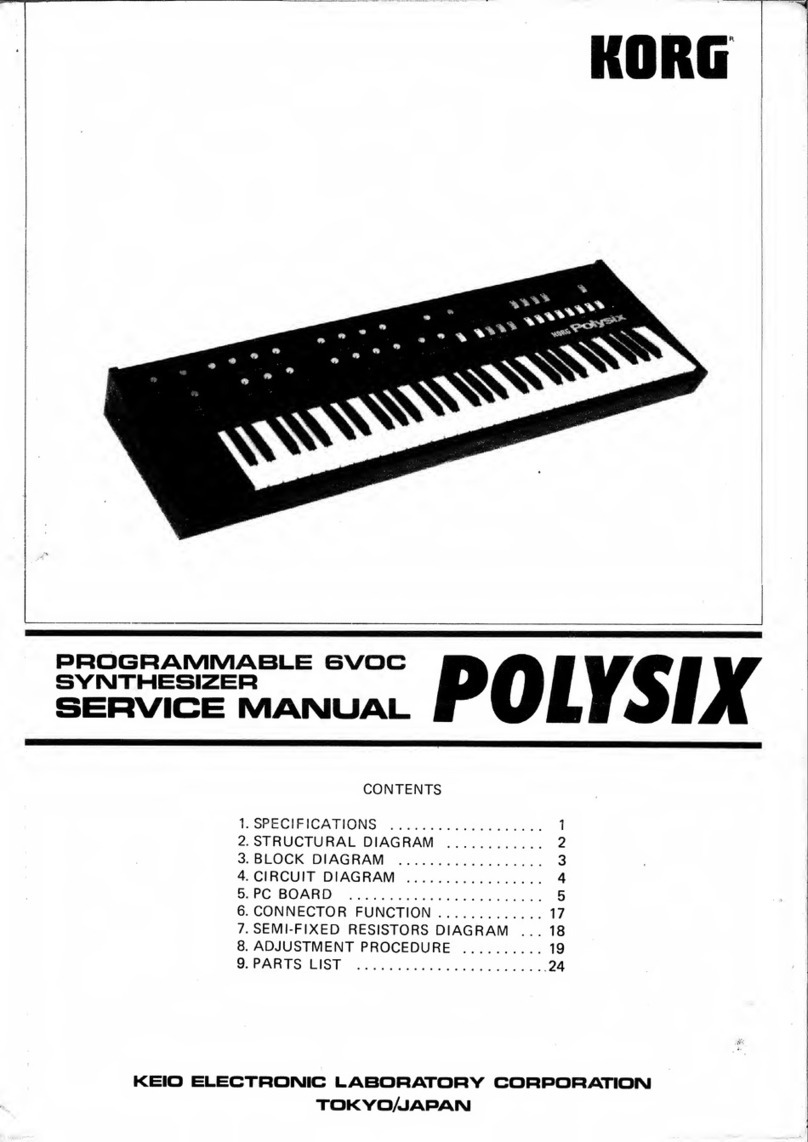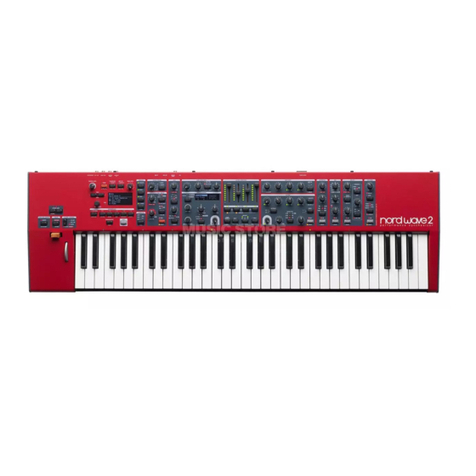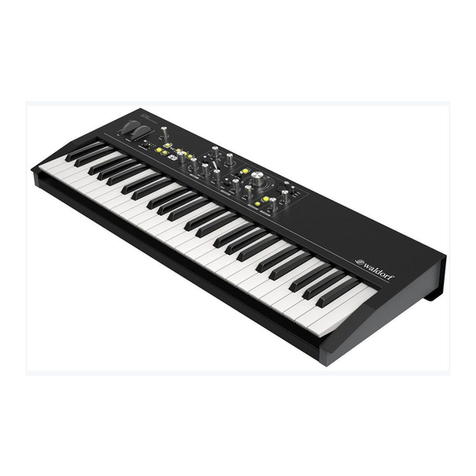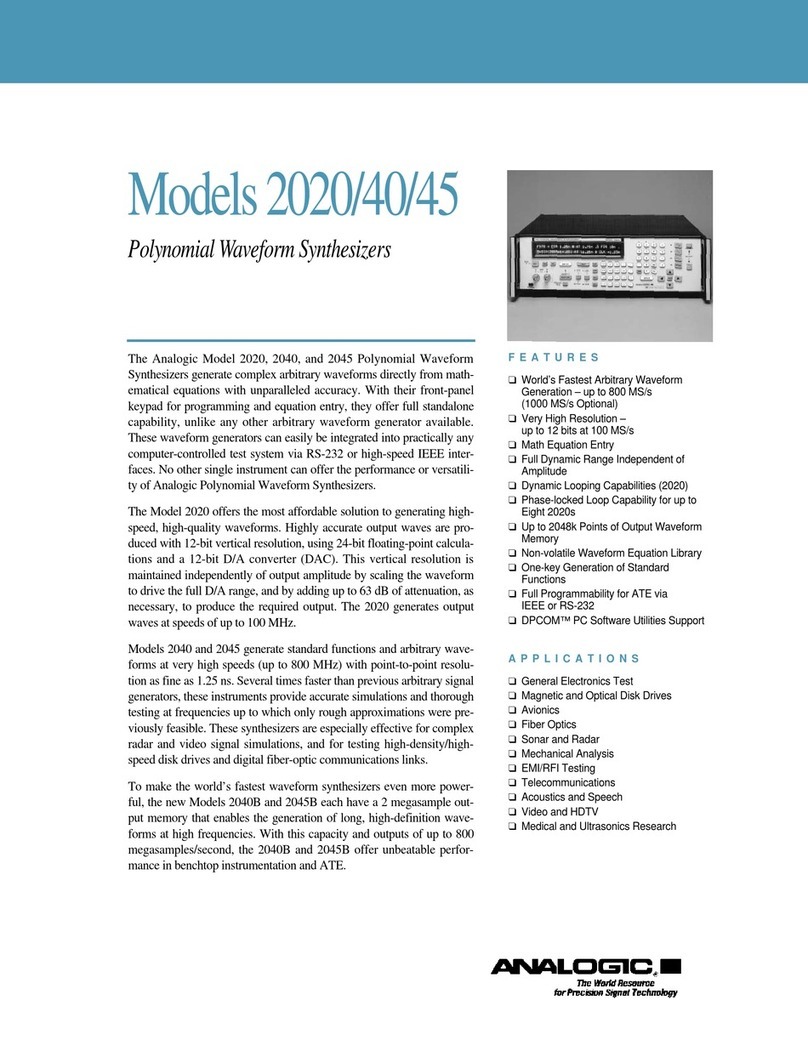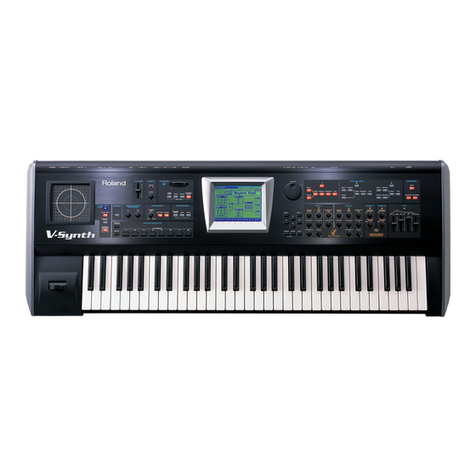SSF entity BASS DRUM User manual

1
1TRIGGER INPUT and PING!
The TRIGGER input jack is used to initiate a percussive tone and trigger an envelope from the Rise/Fall generator. Any signal above 1V
can be used - not just triggers or gates.
The PING! button is used to audition a sound without anything patched into the TRIGGER input.
2
2BODY and BODY CV
The BODY control emulates the response of a drum head. It is a subtle control and the eect can vary depending on the status of
other parameters like RING and FM levels.The center position is the most tuned response whileTight produces the least resonant,
lowest amplitude and loose produces a abbier sound. BODY CV works best with bipolar voltages but will accept any polarity CV.
The Body Control works as an oset when external CV is used.
2
3
3
3ENVELOPE GENERATOR
The built in RISE/FALL envelope generator is a powerful feature of the Entity BDS. It can be used to optionally modulate the frequency
and or amplitude of the sound via the FM LVL and AMP switches. The envelope can also be used stand-alone via the +ENV output on
the bottom left of the module - or self patched from that jack into the other voltage controllable functions of Entity.
The envelope output jack is accompanied by a novel DUCK output.This is an inverted and positively oset copy of the envelope output.
This jack can be used creatively but commonly utilized for patching into externalVCA CV inputs to keep theVCA normally on until a
note/envelope is triggered via Entity BDS. For instance, a bass, lead or pad could be patched into an externalVCA and that signal will
“duck out”in volume when Entity BDS is triggered.
RISE controls the attack stage time of the envelope, FALL controls the decay stage time.
The RISE CV and FALL CV inputs are used to voltage control these functions.The controls become standard CV attenuators when
signals are patched into the CV inputs.
At the top left of the module are a set of switches in the ENV SHAPE section that independently alter the shape of the two envelope
stages.These can be set to logarithmic, linear or exponential. The shapes provide a huge variety of ways to aect the frequency and or
amplitude of the resultant sound.
An interesting feature of the envelope generator is the way it is set to reset upon recurring trigger signals. Rather than reset upon every
new trigger, the envelope waits until it has nished the Rise stage and reaches the re-trigger threshold during the Fall stage. This
provides some additional frequency and/or amplitude dynamics to occur between a set number of sequential triggers.This aect
occurs when the Rise time is set beyond the duration of the actual percussive sound produced. For instance, you can achieve eects like
slight pitch and/or amplitude changes between beats or a steady rise in pitch/amplitude other a larger number of beats. Denitely
worth experimenting with!
3
4
4PITCH and 1V/OCT
The PITCH control tunes the tonal frequency of the output. Featuring a large span of control from about 8Hz to roughly 2.2kHz. Both higher and lower frequencies are capable using the 1V/OCT and/or
FM CV inputs. The 1V/OCT input is used for tracking Entity with a sequencer, keyboard or as an additional FM input. The module will reliably track at least four or more octaves.
4
5
5
5FM LVL, FM CV and FM SWITCH
The FM LVL control is a bipolar attenuator. Center position reduces the modulation depth to zero. Fully right is maximum positive depth, fully left is maximum inverted depth. FM CV jack is used for patching external modulation
sources to frequency modulate the output.The switch below FM LVL has three positions that select the routing to the FM LVL control. The rightmost position selects FM CV only and doubles as an “OFF”selection if no CV is patched
into the FM CV jack. The center position will sum any signal patched into FM CV with the internal envelope generator. The leftmost position selects the internal envelope only.
6
6
6RING and RING CV
The RING control aects the resonance and resonant decay time of the output signal.The amount of resonance/decay produced by this function is independent of the other controls. However, using the internal
envelope or external CV to control the amplitude (volume) in the OUTPUT VCA section (see below) can have an aect on how much resonant decay is heard - a useful sound design feature. At maximum setting, RING
will produce a sustained self oscillation.When set to minimum, a small amount of resonance will still be present. The RING CV input is used to modulate the RING function and the RING control works like a standard
attenuator when RING CV is in use.
7
7OUTPUT, AMP CV and SWITCH
The OUTPUT control aects the amplitude (volume) of the sound.This control has two functions which are dependent on the position of the switch below the control.When the switch is set to AMP, the OUTPUT
control works like a standard volume attenuator - min position will fully attenuate and max position produces a 16Vpp output level (while saturation level is in min position). If a signal is patched into AMP CV, the
control behaves as a cross-fader, fading between the full CV signal value in the min position and full nominal output level in the max position. Similarly, when the switch is set to ENV, the control fades between the
full internal envelope signal at min, and full nominal volume at max.The cross-fade feature is useful for achieving better control over signal dynamics - similar to a parallel compression type behavior.
It can be useful to use the internal envelope or external CV to modify the output dynamics - for example, you could have a long RING decay set but use the AMP VCA to attenuate the sound before the RING decay ends
and use the envelope shape controls to modify the amplitude dynamics etc.
7
8
8
8SATURATION and SAT CV
The SATURATION control aects the harmonic content of the sound using a multistage, discrete transistor topology. Just a touch will add a bit of punch while the full range oers heavy saturation eects onto the
output signal.When both the OUTPUT and SATURATION controls are at max, a small amount of hard clipping is introduced. If only soft clipping is desired (more bass heavy, softer high frequency distortion) you can
back down on the output control.The saturater does add a bit of amplitude to the signal but the already high headroom of the output section allows you to back o the output level a bit while still retaining a higher
than normal output volume.
9
9A-MIX INPUT
A-MIX is short for Amplier Mix. This is an auxiliary input into the nal outputVCA stage. This input is useful for mixing other signals with the Entity BDS sounds. For example, noise can be mixed with the output to
make a snare sound, etc. Using the internal envelope or an external CV to control the output levels will help to shape these signals into percussive sounds.
10
11
12
SYNOPSIS
The Entity Bass Drum Synthesizer is a modern amalgamation of the most important functions to create a wide range of bass, bass drum and
various percussive rhythm based sounds. Additional functions have been incorporated in order to increase both the versatility in use within a
modular environment and broaden the sound sculpting abilities of the Entity itself.
The Entity BDS is a studio quality, high delity analog design with focus on maintaining maximum clarity and dynamic range. Special care has
been applied to producing an isolated, low inherent noise and high headroom device suitable for home, studio and live/DJ use. Entity excels as
both a center piece or just an addition to that monster patch. But you may nd that when using Entity, very few additional modules are
needed to achieve satisfying results.
Please take some time to read over the manual, play with the controls and try out some examples on the following pages. Get familiar with
the subtleties of the controls as you will be rewarded after just a short time of experimenting. As always, Enjoy!

10 OUTPUT
Entity BDS OUTPUT jack. The default output and signals mixed into the F-MIX and A-MIX inputs are routed here.
11 F-MIX INPUT
F-MIX is the direct input into Entity’s resonant lter. This input is used for a number of functions as described below:
1. VOLTAGE CONTROLLED RESONANT FILTER:
Patch an external signal into the F-MIX input. The PITCH control aects the cuto frequency of the lter and RING controls the resonance (there will always be a little bit of resonance present at the
minimum RING setting). SATURATION aects the harmonic content as usual.
2. DYNAMIC RESONANT VCF:
For producing acid bass and lead lines and other frequency based rhythmic eects. Extending the abilities from function (1) above, The trigger input is utilized for triggering the internal envelope. The
envelope can then be switched on to aect the FM and/or amplitude of the signal. Use the FM LVL control to aect the strength of the percussive accent upon the ltered signal. An external modulator
can also be combined with the internal envelope when the
ENV+FM
switch is engaged and an external modulator is patched into the
FM CV
input.
EXAMPLE:
Patch a square or saw wave into the F-MIX input. Use a sequencer to aect the pitch of the sourceVCO if desired. Patch a trigger source into the TRIGGER input. Pattern based gate
sequencers like GateStorm produce the most interesting eects. Switch the FM LVL control to ENV or
ENV+FM
and use the attenuator to aect the depth of modulation. Experiment with
the envelope shapes and timing, depth of modulation and other controls.The OUTPUT can optionally be set to ENV to aect the volume ratio of the accented and non-accented material
with the OUTPUT control. For further processing, try patching the internal +ENV or DUCK outputs to aect the other modules you may be using.
3. AUXILIARY TRIGGER INPUT:
You can use the F-MIX input as an AUX trigger when producing percussive or bass-line sounds.The eect is that of a muted version of the main percussive output and will produce a wide range of
dynamic rhythms and sense of movement. It is recommended to use a gate or trigger source with variable pulse width for greatly enhanced swing and variations of this eect. A 10V amplitude trigger or
gate source is recommended for the strongest eect.
EXAMPLE:
Patch a gate sequencer into the TRIGGER input and create a pattern on the sequencer. Create another pattern using the same sequencer or another module synced to the rst sequencer.
Patch the second pattern into the F-MIX input.You will notice the auxiliary muted percussion in relation to the main sound. Now try varying the pulse-width of the secondary pattern.
Notice how the swing of the rhythm changes with the pulse width but the main sound keeps in time. Experiment using all the controls and switch settings.
12 RGB STATUS LED
This LED provides visual feedback for the major functions related to the processed signal.
An active trigger is displayed in green.The duration of the green pulse is aected by the BODY control as a faster green blip indicates a tight response and a longer pulse indicates a loose response.
Depth of
frequency modulation
is displayed in
blue
. Whether positive or negative, the level of depth is always indicated by the intensity of the blue portion of the LED.
The output waveform is displayed in red.
ADVANCED PATCHING AND TECHNIQUES
The controls and internal routing of the Entity BDS are capable of producing a very large variety of sounds on their own. However, all those CV input jacks are not there to just ll empty space! In this section we highlight some
important processing features that may or not be obvious.
IN GENERAL
LFOs and Envelopes from other modules are typical sources of external modulation and they work great with Entity. But it is worth noting that while we are using clocks and pattern based gate sequencers to trigger entity, they also
work great as stepped DC modulation sources. For instance, if we have a pattern setup to trigger the main drum sound on the quarter note of a sequence, we could patch a half note division (or another pattern) into one or more of
the CV inputs to change the sound on every other beat. Remember that the controls will then become attenuators for the incoming CV when we do this. Using gates as modulation sources is not absolutely necessary but good
knowledge to have if modulation sources are limited or used up in your eurorack system as well as provide an absolute level change as dialed in by the attenuators on Entity BDS.
SELF-PATCHING
Entity can also be self patched. Below you will nd the possible arrangements:
+ENV and/or DUCK can be patched into:
BODY CV, RING CV, SAT CV, 1V/OCT CV, F-MIX or A-MIX (in some cases, patching the envelope into the audio inputs can produce subtle emphasis or introduce additional frequency dynamics)
When using a mult or stackable cable, the output can be fed back into the CV or audio inputs. Most notably, when fed back into the A-MIX input, super saturated sounds are achieved and even chaotic self oscillations. If the
oscillations are not desired (perhaps in most cases) turn down the OUTPUT a bit until a stable point or desired eect is achieved. You may also try The F-MIX input for a more subtle eect.
ACCENTS
As you may have noticed, Entity does not have an ocial accent input. This is because the Entity can produce dierent kinds of accents via using the CV inputs.We can use the FM inputs for frequency based accenting, amplitude
based accents with the AMP CV input and freq/amplitude based accents using the SAT CV input. Additionally, anti-accents or muting are also possible with negative going CV or even still with positive CV when patched into the RISE
or FALL CV inputs.
AUDIO and CV LEVELS
OUTPUT LEVEL
As mentioned, the nominal maximum output level of Entity is 16Vpp (-8V, +8V). Nominal eurorack audio levels are typically 10Vpp. The Saturater will push this level into hard clipping through the internal amplier when set to
maximum. The saturater is a high gain device. By its nature, everything that passes through it is amplied, including the noise oor. Entity is very low noise and includes features that substantially reduce the amount of external
noise present in most eurorack systems. However, no design is completely free of noise. Some, although only slightly audible noise may be heard if the output and saturation controls are at maximum and the Entity is the only
source being auditioned. If this was ever an issue, one can simply turn down the output slightly until the noise is inaudible and still maintain a higher than typical output level. In most cases (like within a mix) the noise may never
be heard at all - even at max output and saturation settings - but important to point out none the less...
CV INPUT LEVELS
RISE, FALL, RING, SAT and AMP CV inputs require +8 to +10V for nominal operation. Bipolar or negative voltages will not harm these inputs but expect little to no response from CV signals in the negative region.
BODY, FM CV and 1V/OCT require any positive, negative or bipolar CV source - in other words, anything your modular system can produce is accepted and usable.
CV OUTPUT LEVELS
+ENV and DUCK output swing is 0V to +10Vp.
POWER CONSUMPTION
QUIESCENT: +61mA, -91mA
MAXIMUM: +72mA, -125mA
PATCH SHEETS
Patch sheets are download-able via the Entity BDS product page on our website: steadystatefate.com
Current and future presets will also be available for viewing here. If you would like to submit a preset, please share with us via our contact page on the company website.
Table of contents
Other SSF Synthesizer manuals
